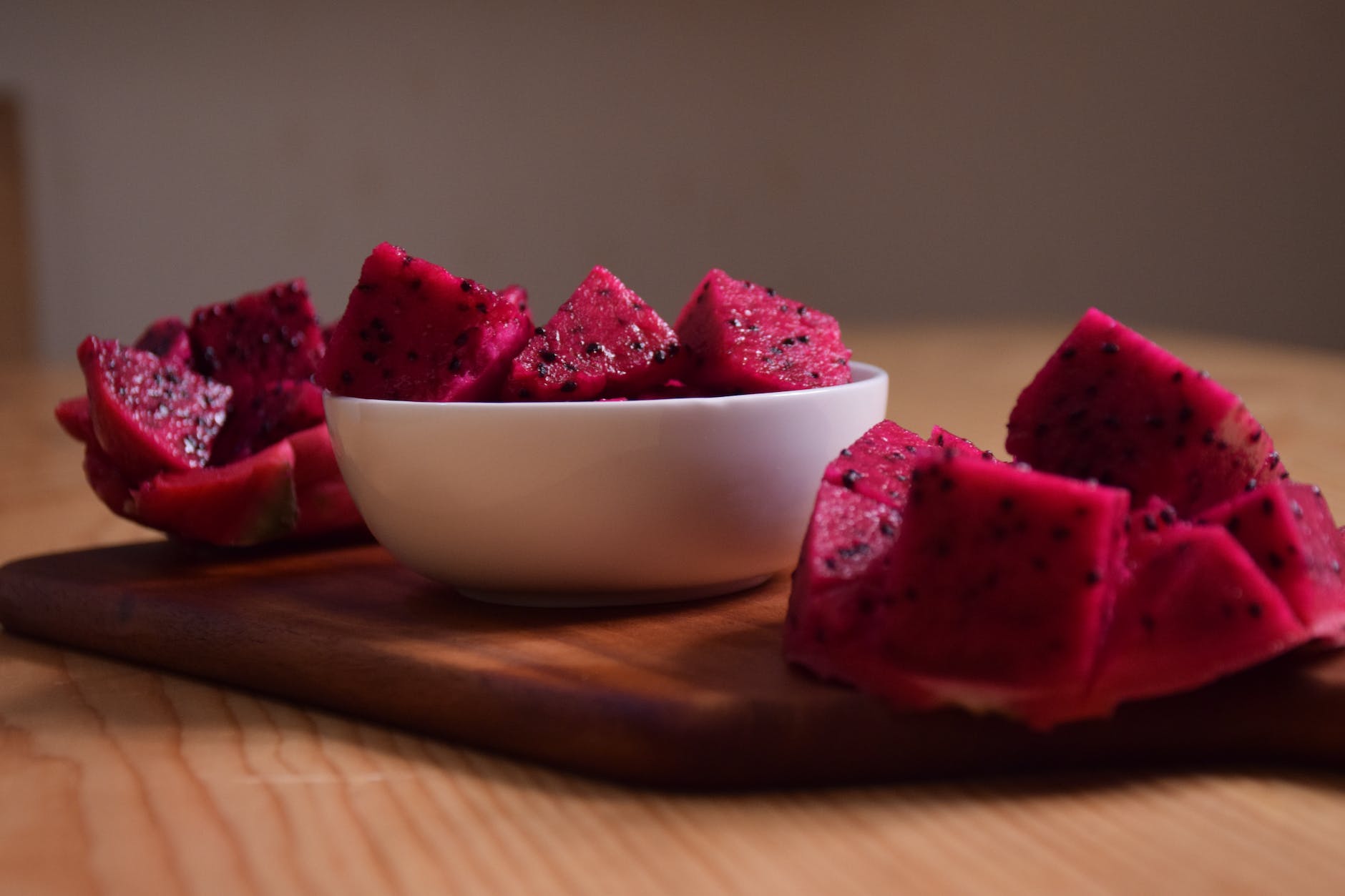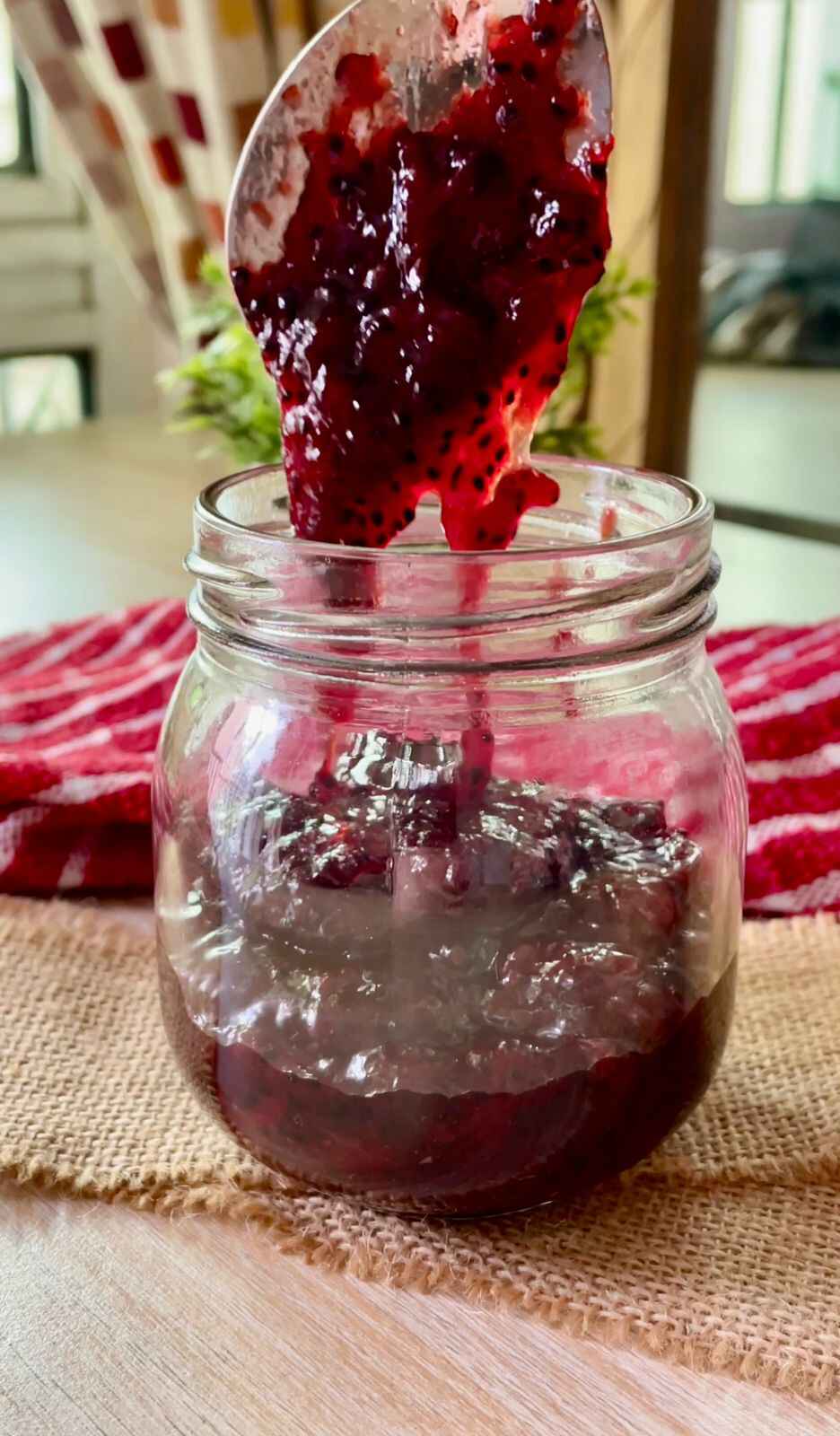
Welcome to my kitchen, where I am always experimenting with fresh and exciting flavors! Today, I’m thrilled to share a delightful recipe that combines the sweet and tangy taste of plums with the exotic flair of dragon fruit. Enhanced with the rich, caramel-like sweetness of jaggery and the warm spice of cinnamon, this compote is a versatile treat perfect for topping your favorite desserts, breakfast dishes, or simply enjoying by the spoonful. Whether you’re a seasoned cook or just love to dabble in the kitchen, this Spiced Plum and Dragon Fruit Compote with Jaggery is sure to become a new favorite. The best part? You can store this compote in a jar and keep it in the fridge for a few days, making it a convenient and delicious addition to your meals throughout the week. Let’s dive into this easy-to-make, yet irresistibly delicious recipe!
Ingredients:
3 ripe plums, pitted and chopped
1 dragon fruit, peeled and chopped
1/2 cup jaggery powder
1 cinnamon stick
Instructions:
Start by chopping the plums and dragon fruit into small, bite-sized pieces. This will ensure they cook evenly and blend well in the compote.

In a medium saucepan, combine the chopped plums, dragon fruit and cinnamon stick and cook for 2-3 minutes.
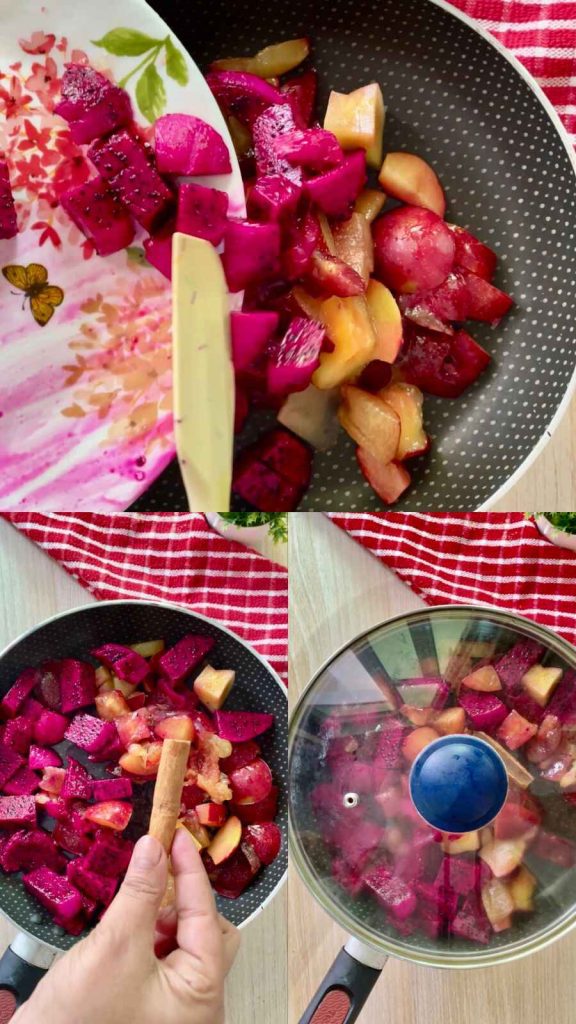
Now add the jaggery powder. Cook over medium heat, stirring occasionally, until the fruits begin to soften and the jaggery dissolves, about 5-7 minutes. You’ll notice the wonderful aroma of the fruits and jaggery blending together.

Continue to cook for another 10-15 minutes, until the mixture thickens to a compote-like consistency. Stir occasionally to prevent sticking and ensure even cooking.
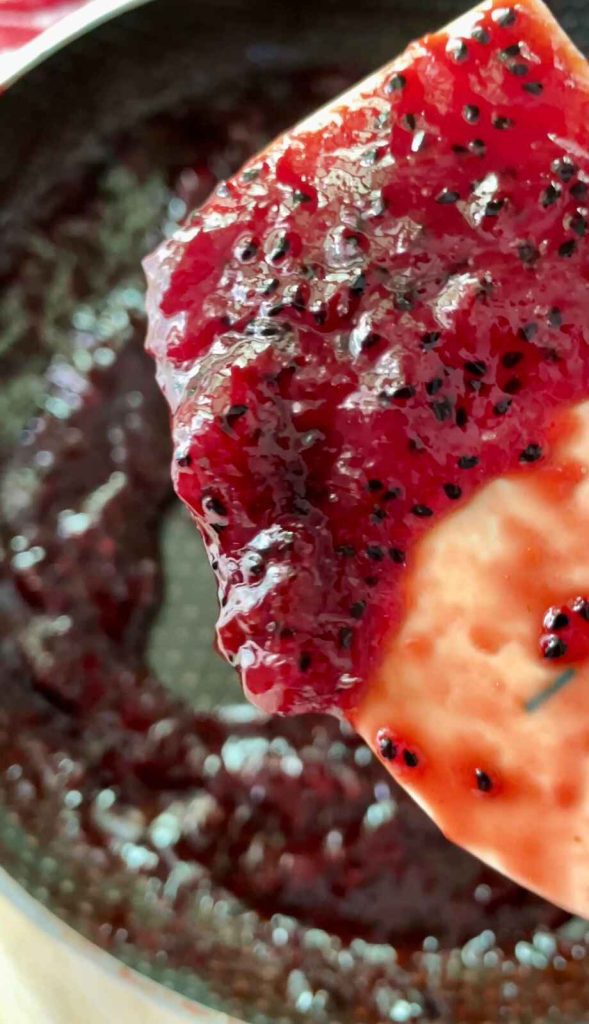
Remove the saucepan from the heat and let the compote cool slightly. Once cooled, remove the cinnamon stick and transfer the compote to a clean jar. Seal the jar tightly and store it in the fridge. This compote will keep well for a few days, allowing you to enjoy it throughout the week.
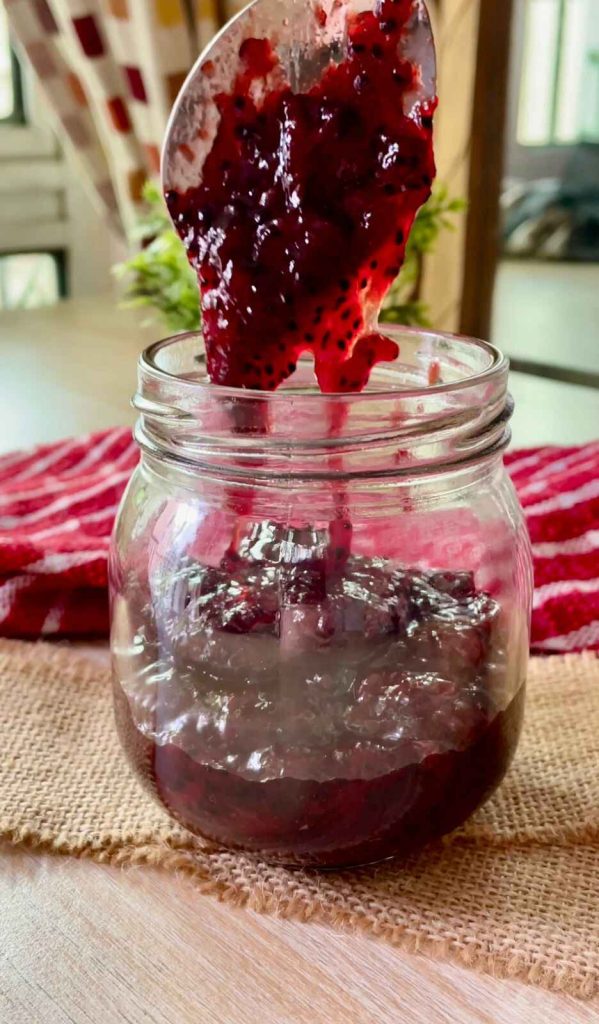
Serve the compote warm or chilled. It’s a fantastic topping for yogurt, ice cream, pancakes, waffles, or toast.
You can also enjoy it on its own for a simple, satisfying treat.
Tips:
Adjust the sweetness by adding more or less jaggery powder to suit your taste. For an extra flavor boost, consider adding a splash of vanilla extract or a squeeze of lemon juice towards the end of cooking. This Spiced Plum and Dragon Fruit Compote with Jaggery is not only easy to make but also a wonderful way to incorporate unique flavors into your meals. I hope you enjoy making and eating it as much as I do! Happy cooking!

